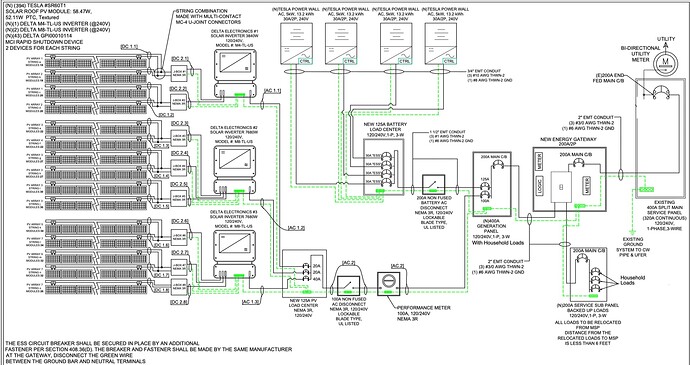New to IoTaWatt but experienced with other energy monitoring methods. I have a moderately complex installation so I am asking humbly for purchase suggestions. As the title indicates, I have 320A service coming into a single panel (Siemens E4242MB1400CFU) rated for 400A. Solar with power walls are also used with inputs into the large panel. There is a 200A sub panel within 18 inches of the main in which I would like to monitor some things. I have 4 power walls but they are physically separated from the main panel by >20 feet in a crawlspace. Electrical schematic attached.
Goals:
- Whole home consumption monitoring with accurate solar production/net metering.
- Individual circuit monitoring for some but not all (ie GSHP furnace x 2, EV chargers, Hot water heaters, appliances, etc) totaling likely less or equal to 14 to start.
- Would like to be able to monitor powerwall charge/discharge status but likely more complicated and not absolutely necessary (am already monitoring with other methods but without the granularity I would like).
Thanks for suggestions and sorry if this is inappropriate to post - will delete if so.
